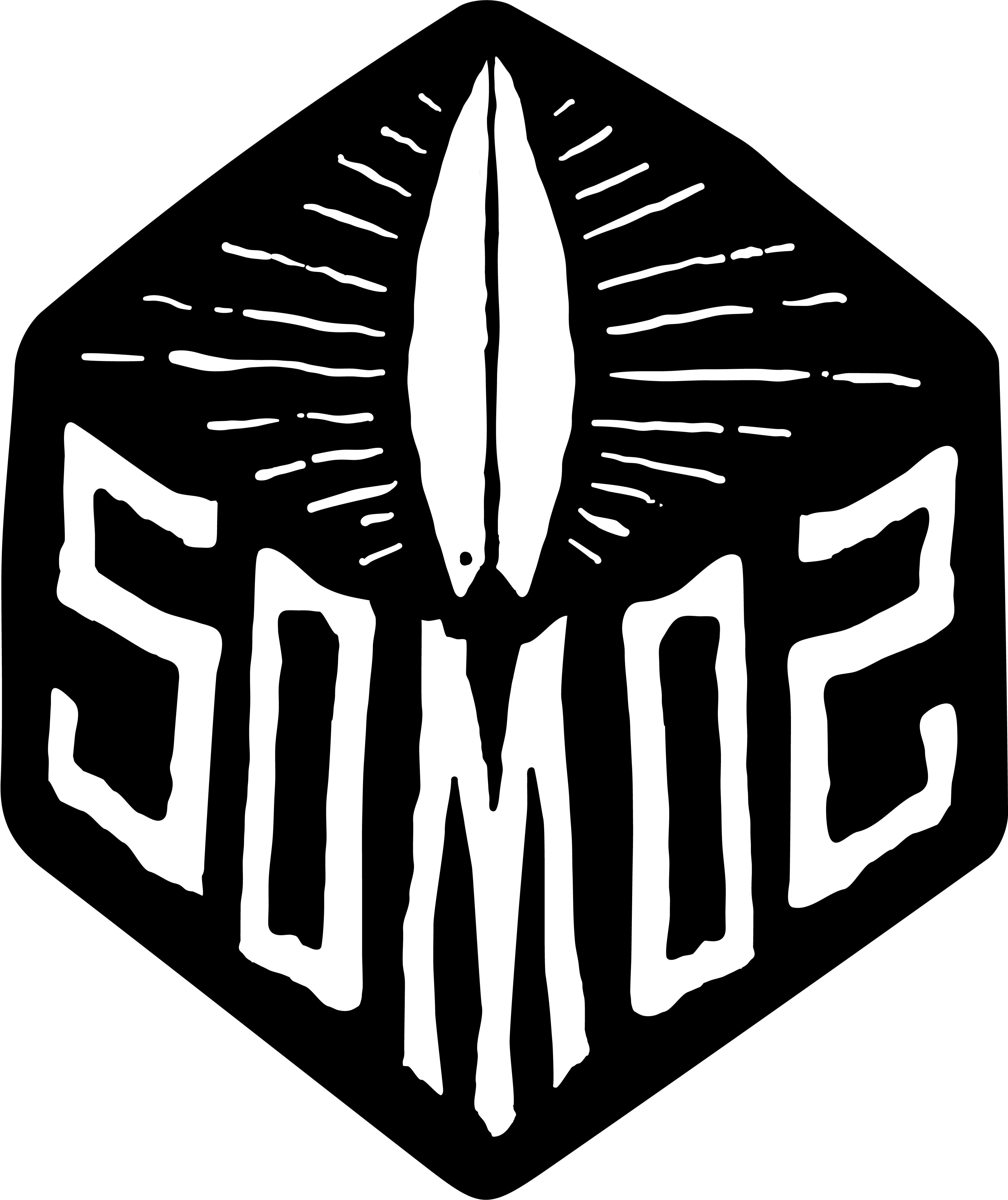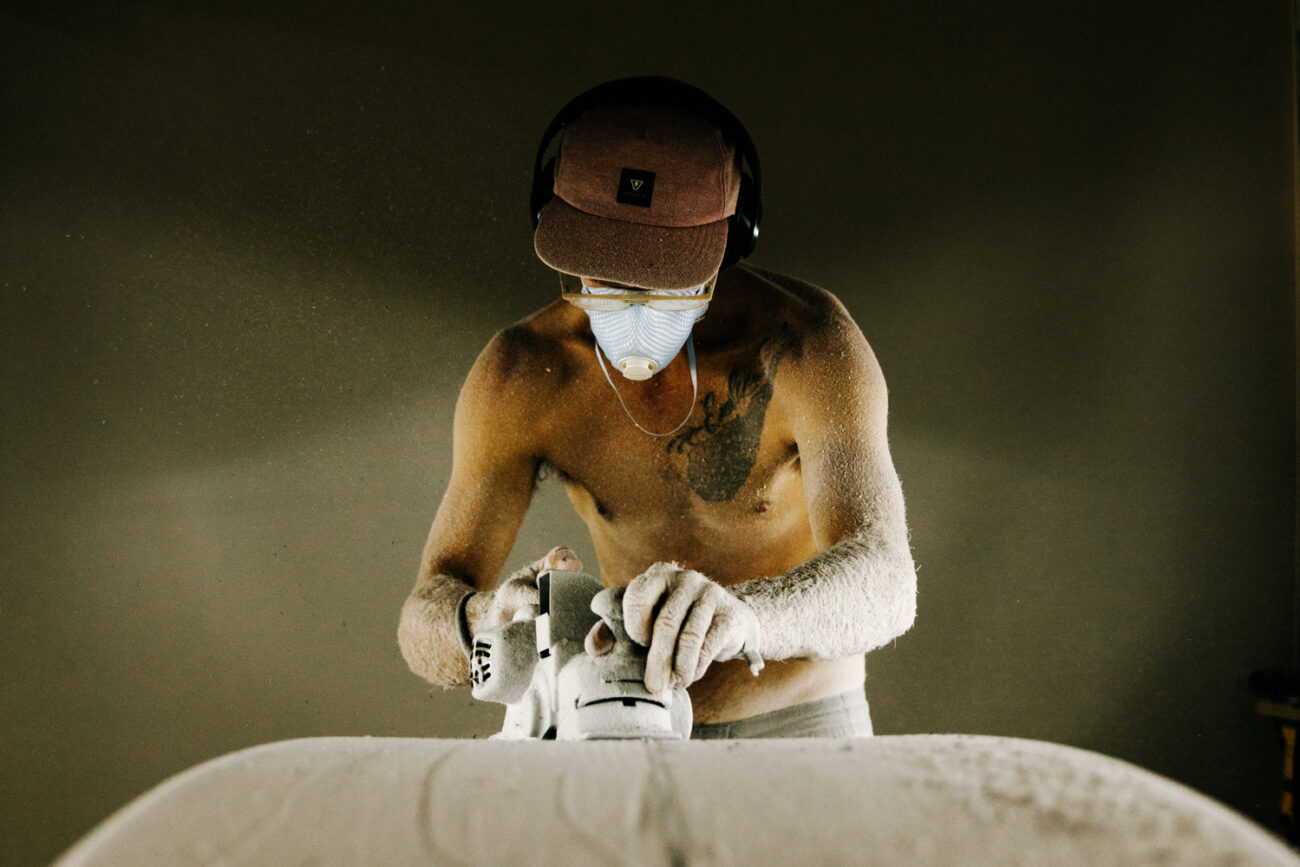
Originally from Cape Town, South Africa, now living in San Clemente, California, incredibly talented shaper Donald Brink, shares his personal journey and professional approach to the world of asymmetrical surfboards design and opens up about the experiences that have impacted his personal philosophy.
Hey Donald, we’re thrilled to have you here at Somos, can you tell us a bit about yourself?
I’ve been building boards for over 20 years now. It doesn’t seem that long, but it’s also been more than half my life now.
My name’s Donald Brink. I’m from South Africa. I love to build surfboards. I love making things, and surfboards are fascinating that way because there’s so many steps and stages and there’s so many things that build upon one another when it comes from design, expressing the intent of what you’re trying to make and the changes that you incorporate and why they matter for somebody or some purpose. I love doing that. For me, by the time I finish building a board, you’ve gone on a little journey and hopefully it’s going to make someone happy and work and last and that to me never gets old. Yeah, that’s the joy I think. I know it’s the joy, I do it, I love it.
And how did you get into shaping?
Really was just because I was fascinated with how things were built or put together in general. I only started surfing when I was 15, moving to the coast then. So for me, all I ever wanted to do was surf. Before that, I grew up doing a lot of artwork, essentially painting from a young age. And when it comes to putting a painting together or approaching something that’s within your mind and expressing it on canvas specifically canvas with paints I don’t know what it is, but there’s a similarity to approaching a project looking at a blank and starting to draw cut out and fine-tune a craft. There’s a mental exercise that I love.
I really try and make things that people love and that work but there is a part that’s just so very much expressive and fun and that’s why I do it, you know. There’s something to me that I love about having to show up day after day and do my best. You’ve got to bring your A game every time. I like that about it.
I love boards that make your life happier. That’s the goal. Bring the smiles.

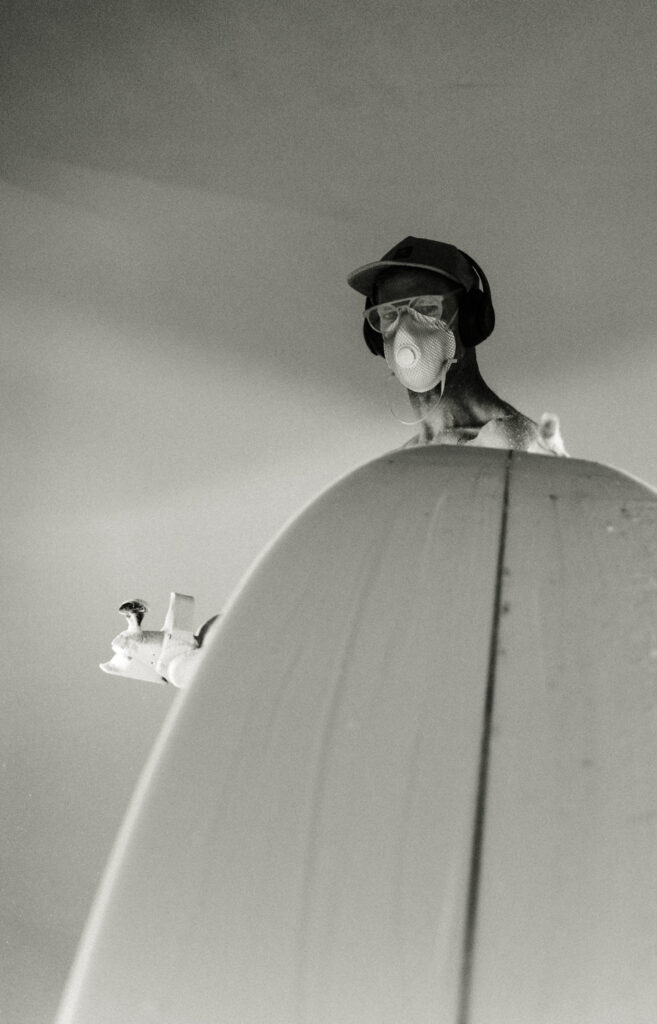
On asymmetrical surfboards:
The first asymmetrical board I made was built out of trying to solve frustrations within a design. In other words, there was a frustration within a certain board I was using at a certain time in my surfing and I made these changes to hopefully incur a more freeing and joyful experience. That was 16 and a half years ago.
The majority of my work is stance specific boards, so tailored for a toe rail and a heel rail, cohesively put together so you’re surfing both left or right on the same board, but which way you’re standing is what matters to me.
Now the bravest of these changes get shown in smaller boards, where I know your feet are supposed to be and we can design around where I know you’re going to be and how you’re going to manipulate it to ride it. At the end of the day, how you surf is always more important than what you ride. Technique will always triumph the design, but there are incredible advantages that I’ve found to embrace and consistently depend on that bring so much joy when you get the cohesive collection of these changes made and a board that you forget what you’re riding and only feel the wave. That really is the goal.
It’s exciting where surfing is going because of the embrace that people are having to an off-norm offering. And I chose those words instead of saying an alternative board because I love making performance boards for high-level surfers or good surfing, because at the end of the day, these are precious days and minutes and hours that we spend in the sea. You want to really do good. But we’re in a great place where people are a little more open-minded, but I always want to be the first to say about my boards, or anyone’s, to be honest, it has to work. And it has to work better than anything you’ve ever used and something that you absolutely can’t do without or love because then you will treasure it, your surfing will get deeper within your own life and that’s not just a surfboard, it’s something like a tool within your own lifestyle. So for me, yeah, it’s really exciting to see people embracing different offerings. If they bring a smile.
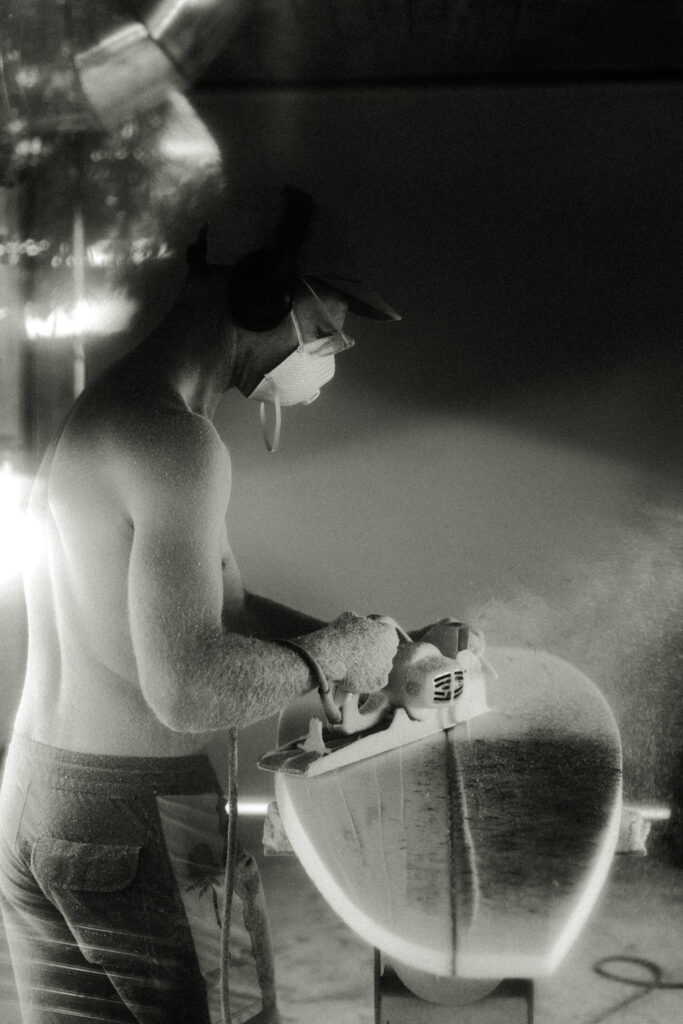

“And the board has to work better than anything you’ve ever used and something that you absolutely can’t do without or love because then you will treasure it, your surfing will get deeper within your own life and that’s not just a surfboard, it’s something like a tool within your own lifestyle. (…) I love boards that make your life happier. That’s the goal. Bring the smiles.”
On purpose and surfing:
I often get really critical of myself. “What am I really doing? Spending all this time and essentially devoting now half my life to building boards. “Does it really matter?” But, gosh, it matters to me! And there’s so many people that it matters to and within that there’s a community that… I always say if you can cultivate your fascination for the sea and surfing and use it to responsibly balance whatever the rest of your life is. Surfing is just one part but if it’s an important part then it interweaves with every other part and if it’s left out then it’s a loose weave and you’re off balance. So it is important and therefore care for it just like everything else so that you are more balanced: husband, father, friend, community member, whatever it is. It hit me fairly recently. I would say within the last two years it started to become something that now I’m going to share because I had never seen it in this light.
Surfing can be seen as a selfish, a suitor activity, and there are parts of that, and I agree to that, yes, but what it also is, is a very personal activity. So there’s a self-challenge, it’s you and the ocean, and you get to ride these waves, which is really the goal, but you come back with joy.
You always return from surfing, and you return to a family, you return to a neighborhood, you return to a workplace. So there’s these retreats from whence you come and the stoke that you bring back if done well. And that helps taking building boards really seriously. It started to make sense like why this is so important to do well, have fun, and to be able to enjoy doing it for a long time.
I mean, if you look at us. We are sitting at the House of Somos in Costa Rica, Santa Teresa, and the kinds of people from around the world that walk through these doors and enjoy these waters and share meals together, that kindred spirit is self-evident. It’s obvious, right? But the kinds of bonds that you have with those people will never have to be explained. They’re just there. And yet we’ll all retreat and go back to where we came from. And that’s a beautiful thing that happens when you enter the sea, when you come back home, when you go on a trip, when you go back. I don’t know, there’s something about that that’s part of surfing that makes it the lifestyle that I’ve been very very grateful to have lightly lived.
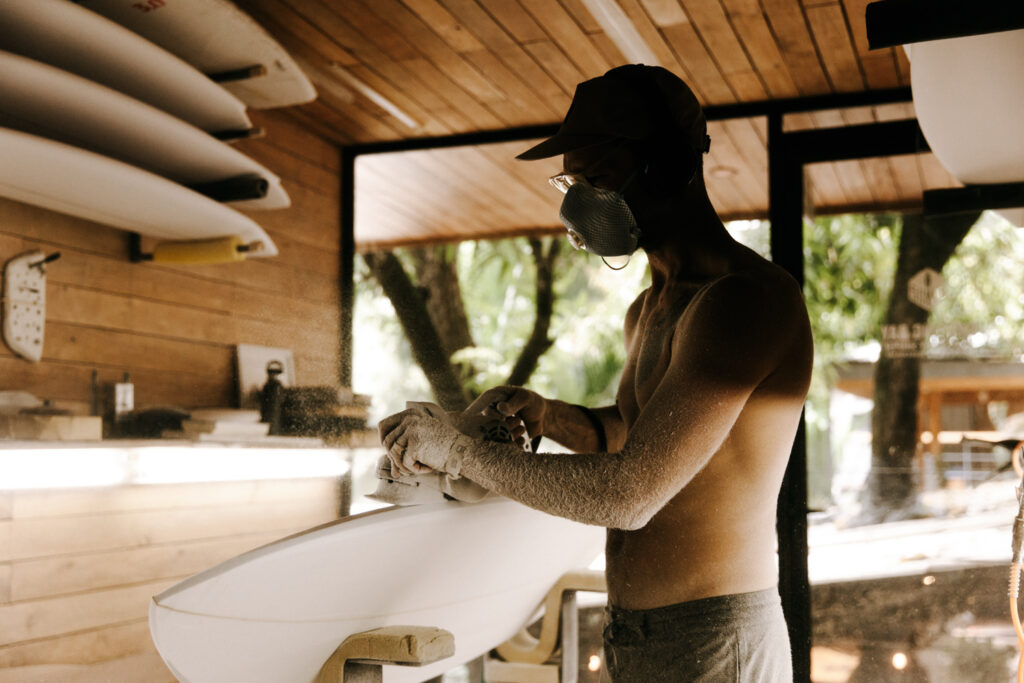
What do you think about waves here in Santa Teresa?
I would call these world-class waves. There was always plenty of powerful and very beautiful waves to be ridden with not many people around. There was always vacant opportunities to have fun in the sea. And that’s not available everywhere in the world and that’s a real gift. I mean we must drive by seven waves before we stop at one and surf it. And there was plenty of opportunity to enjoy yourself out there. And there’s waves for every level too.
Choosing your adventure is really what it is. And being in a place like here in Santa Teresa, you really can find a way that can push you beyond your comfort zone. And you want to do that because feeling scared in the sea is part of surfing. And it’s important to do because, like I said, it’s a personal activity. You push yourself, but you’re always going to come back home (I mean.. if everything goes well, right?) But you want to come back home with these memories of stoke and also self-accomplishment, not to prove that I did it, but within yourself you feel different after working so hard on your surfing or being so in tune with your breath, your body, your fine-moded actions and essentially your technique to be able to dance with the ocean and not survive but to thrive. And that will come at different levels and it’s it’s endlessly fascinating to no matter how well you surf you could always dance in a new way and that is what makes it so special. It’s not like you finish the game and now you’re bored. it’s a self progression of self-discovery so it’s up to you if you want to do it.
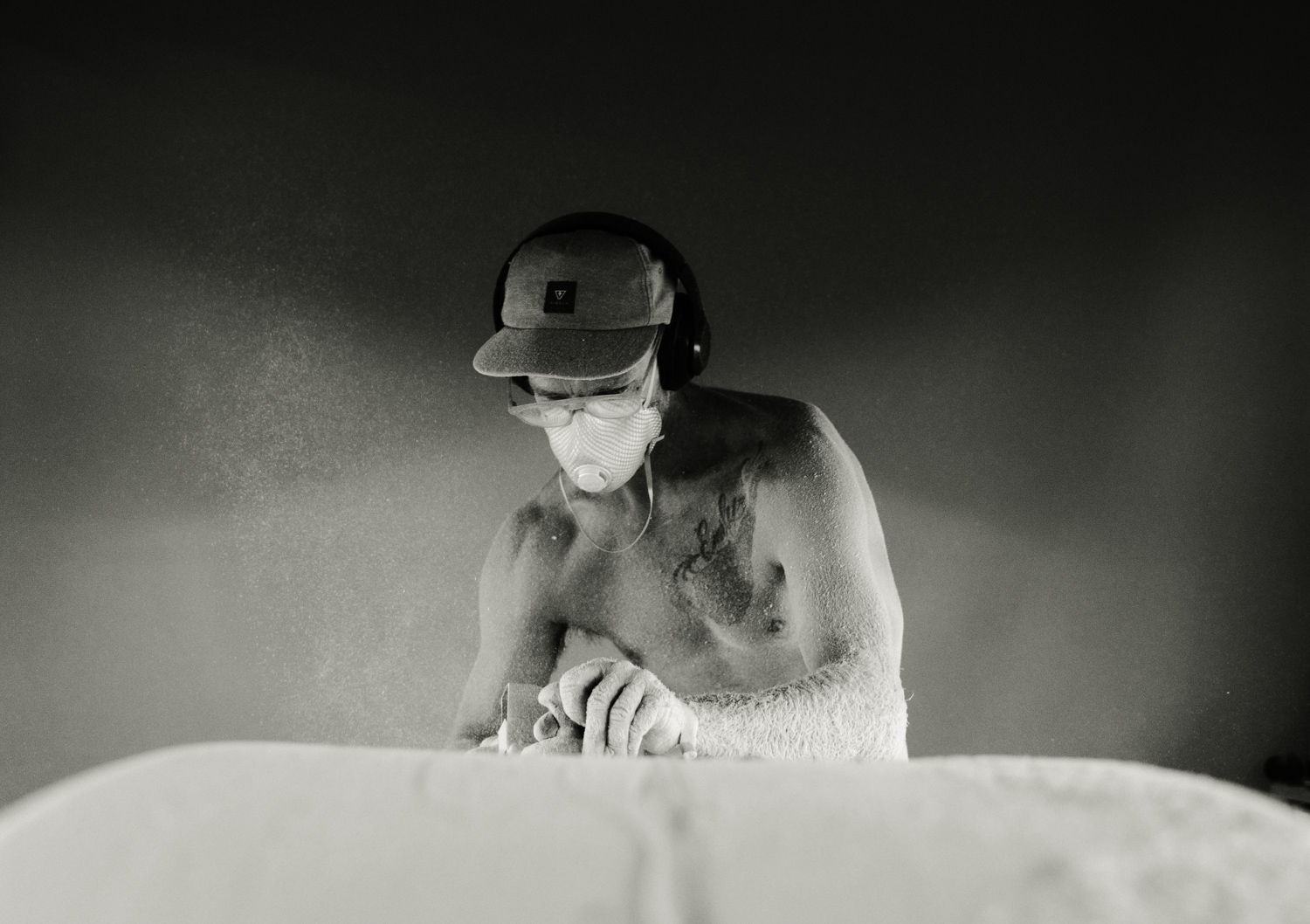
Boards built for SOMOS:
So essentially they’re pretty high performance boards, stance specific, they’re all asymmetrical. A couple goofy foots and mostly regular foots. The waves are really good here, but when you think about how the ocean changes and the kinds of boards that people can consistently enjoy, there’s an important need to think about how do you complement those, meaning when somebody buys a board like that, you want them to enjoy it for a long time, but you want it to be used within the collection of the other boards. So we want to grow quivers, not just focus on one solution to the ocean. And especially with the kinds of waves out here, when there’s a head high wave or more – these waves are perfectly suited to their kind of performance approach.
When they asked me to come on this trip and sent me the details of the House of Somos and the ladscape, I knew that we would be shooting on this location and also against the backdrops of the ocean. And there was a consistent theme of this bright green jungle, the wood backgrounds and the decks, the blue sky, waves and the potentially dark sand. I chose to embrace a pink aesthetic.

“(…) No matter how well you surf you could always dance in a new way and that is what makes surfing so special. It’s not like you finish the game and now you’re bored. it’s a self progression of self-discovery and it’s up to you if you want to do it.”
What’s your favorite place you’ve ever surfed?
Cloud Break in Fiji. I saw the ocean do things. They definitely weren’t the biggest waves I’ve ever ridden, but it was big enough to be memorable. There’s certain waves that you’re fascinated by not conquering them but by being in tune with it and you either have treasured memories that you want to go back for more. I would love to go back now with perspective on life, not even so much on surfing.
There are waves like that around the world and often times there are waves like that that you’ve looked at for many years and never ridden and eventually you get to and these sessions really go deep and are special. You’re really an observer of the ocean as a surfer. The act of actual wave riding is the smallest part of the enjoyment. It’s the most important, and why we’re there, but paddling and wave watching is really what you’re doing. So watching waves, you respond to different waves differently, and the kinds of waves that I’ve had long deep discoveries and testing sessions and just trying things from the designs and building the boards and playing in the sea with it.
6 asymmetrical surfboards shaped by Donald Brink landed in our Somos Store, swing by and check them out or contact bookings@houseofsomos.com to enquire about getting one.
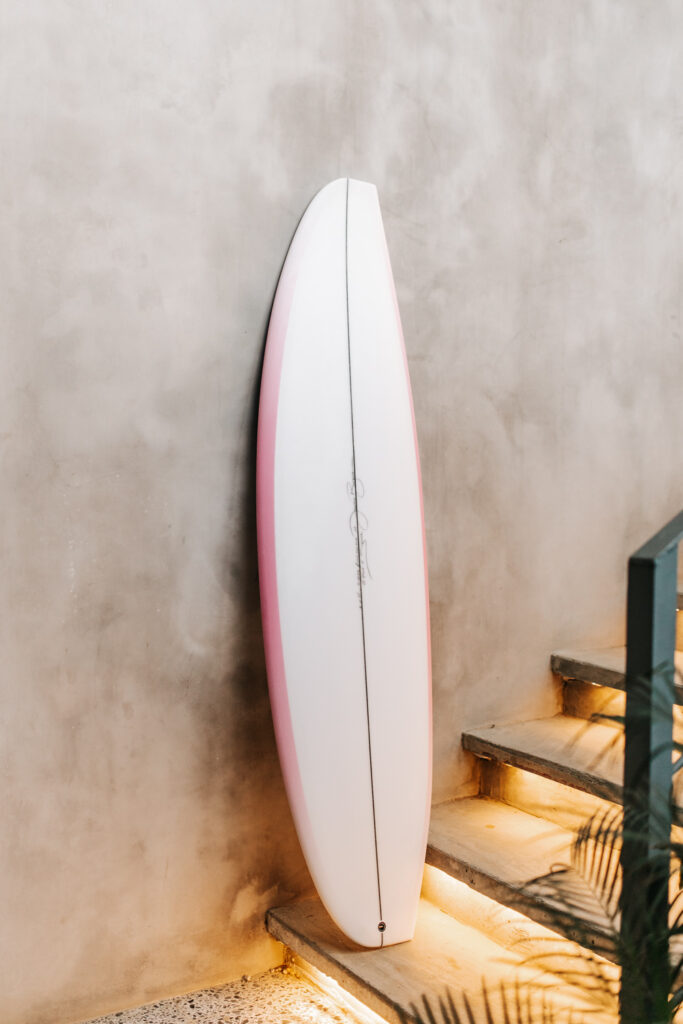
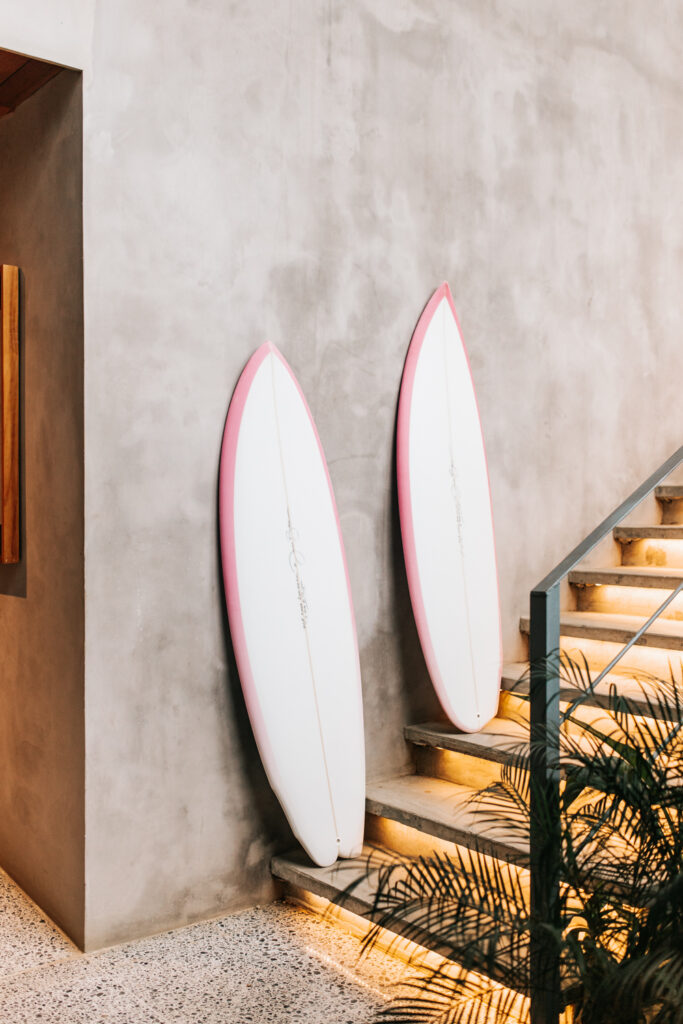
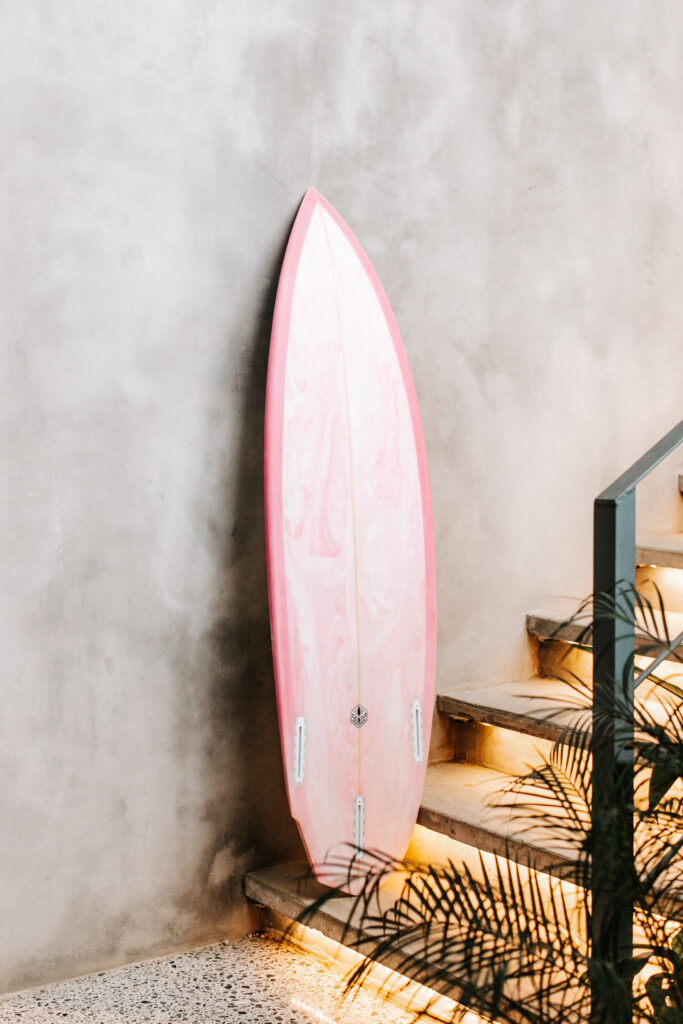
Instagram: @houseofsomos
Donald on instagram: @donaldbrink
